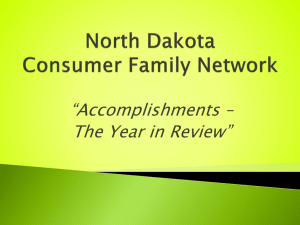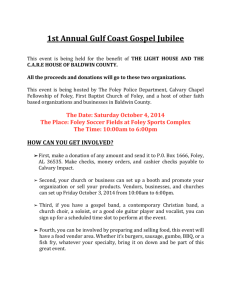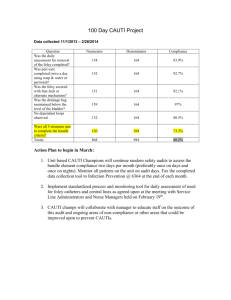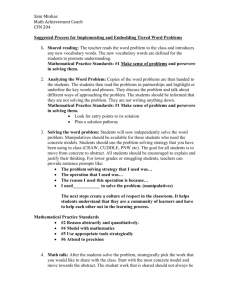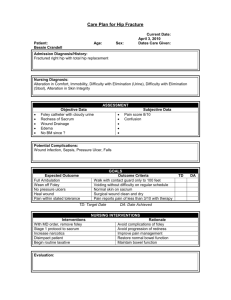CMP3 PD
advertisement
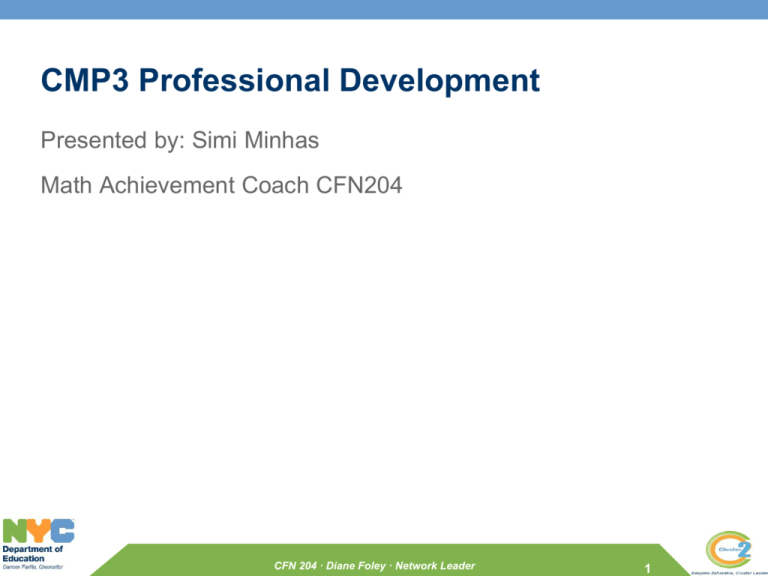
CMP3 Professional Development Presented by: Simi Minhas Math Achievement Coach CFN204 CFN 204 · Diane Foley · Network Leader 1 Focus Ideas/ Essential Questions for Professional Development • How can we pick investigations or problems that engage students in productive struggle? • How can we engage students in math discussions? • How can we encourage students to make their thinking visible? • How can we implement rubrics to set clear, and high expectations for students? • How can we use rubrics and checklists for self-assessment? • How can we use formative data to inform instruction? • How can we collect and track student data? CFN 204 · Diane Foley · Network Leader 2 Launch—Explore—Summarize Problem Overview: Focus Question Launch: Connecting to Prior Knowledge; Presenting the Challenge (Do Now-No more than 5-7 minutes) Explore: Providing for Individual Needs; Going Further; Planning for the Summary Summarize: Orchestrating a Discussion; Check for Understanding; Reflecting on Student Understanding CFN 204 · Diane Foley · Network Leader 3 CFN 204 · Diane Foley · Network Leader 4 Making Thinking Visible By making students’ thinking visible, a teacher can: This practice allows students to: - determine what students know, believe, feel - refine their thinking and reflect on their own thought - identify preconceptions and misconceptions - - assess the quality of conceptual understanding use opportunities for metacognition and self regulation - engage in self and peer assessment - learn from others in the classroom - - assess the ability of students to transfer learning to new situations evaluate and improve instruction CFN 204 · Diane Foley · Network Leader 5 CFN 204 · Diane Foley · Network Leader 6 High-quality discussions support student learning of mathematics by: • Helping students learn how to communicate their ideas • Making students’ thinking public so it can be guided in mathematically sound directions, and • Encouraging students to evaluate their own and each other’s mathematical ideas. CFN 204 · Diane Foley · Network Leader 7 Inquiry Based Learning Traditional Workshop Inquiry Based Learning • Begins with questions/ challenges • Begins with answer • Driven by outside “expert” • Communication flow: trainer to learners • Driven by learners • Communication flow: among learners • Hierarchical relations between trainer & learners • Reciprocal relations among learners • Research informs practice • Practice is research CFN 204 · Diane Foley · Network Leader 5 Key Practices for Orchestrating Productive Mathematical Discussions 1. Anticipating likely student responses to challenging mathematical tasks 2. Monitoring students’ actual responses to the tasks (while students work on the tasks in pairs or small groups) 3. Selecting particular students to present their mathematical work during the whole-class discussion 4. Sequencing the student responses that will be displayed in a specific order 5. Connecting different students’ responses and connecting the responses to key mathematical ideas. CFN 204 · Diane Foley · Network Leader 9 The importance of planning Instead of focusing on in-the-moment responses to student contributions, the practices emphasize the importance of planning. Through planning, teachers can anticipate likely student contributions, prepare responses that they might make to them, and make decisions about how to structure students’ presentations to further their mathematical agenda for the lesson. CFN 204 · Diane Foley · Network Leader 10 The Role of Mathematical Practices The Mathematical Practices come alive in the classroom as students and teachers interact around a sequence of rich tasks to • Discuss • Conjecture — • Validate — • Generalize — • Extend — • Connect — So that students develop deep understanding of concepts and the inclination and ability to reason and make sense of new situations. CFN 204 · Diane Foley · Network Leader 11 Student Reflections and Feedback • What parts of the unit do you think were presented well or easy to understand? Explain why you think so. • What parts of the unit do you think were the most challenging? Explain why you think so. • Explain a new strategy or method that you learned during class discussion today. • How did the collaborative learning group, and math discussion support your learning today? Give specific examples. CFN 204 · Diane Foley · Network Leader 12 Video of a Lesson https://www.dropbox.com/s/3d64cwhaunymaec/problems%2 03.1%20A%20model%20for%20multiplication.mp4 CFN 204 · Diane Foley · Network Leader 13 Educators Guide to 2014 NYS Common Core Assessments http://www.engageny.org/resource/test-guides-for-englishlanguage-arts-and-mathematics ****How can we plan for the test sophistication programs, using the information about the emphasis on specific standards?**** CFN 204 · Diane Foley · Network Leader NYC Link for Teachers http://www.pearsonschool.com/index.cfm?locator=PS2aCo Contains: • Annotated Teacher's Guide • NYC Scope and Sequence • NYC Graphic Organizers • Many other resources CFN 204 · Diane Foley · Network Leader 15 Math Vocabulary for Word Walls http://www.graniteschools.org/depart/teachinglearning/curricu luminstruction/math/Pages/MathematicsVocabulary.aspx Please include math vocabulary words with visuals, definitions, and examples on your word walls. These word walls should be a tool to support ELLs and SWDs. CFN 204 · Diane Foley · Network Leader 16 Questions and Comments Please fill out the feedback form. Thanks!! CFN 204 · Diane Foley · Network Leader 17
